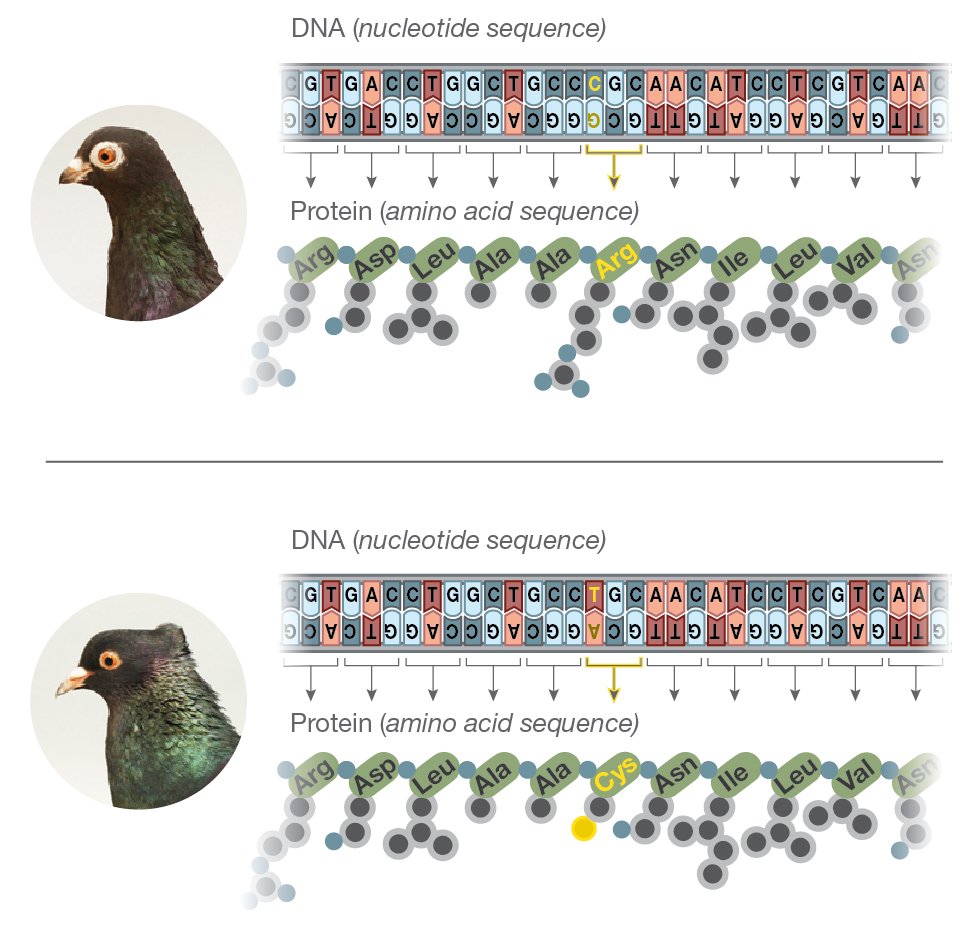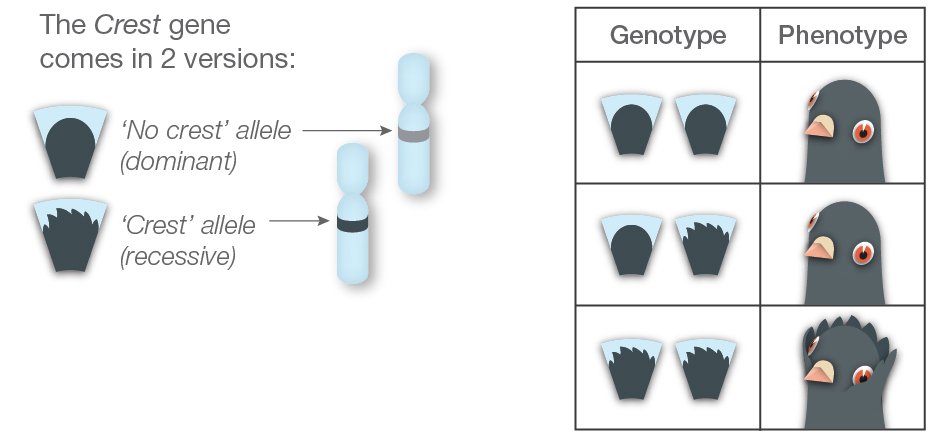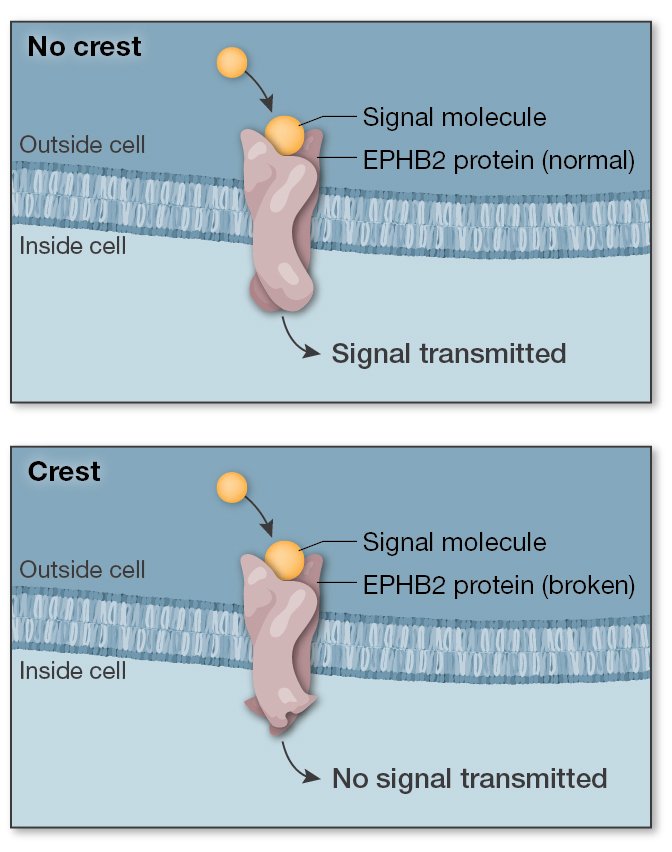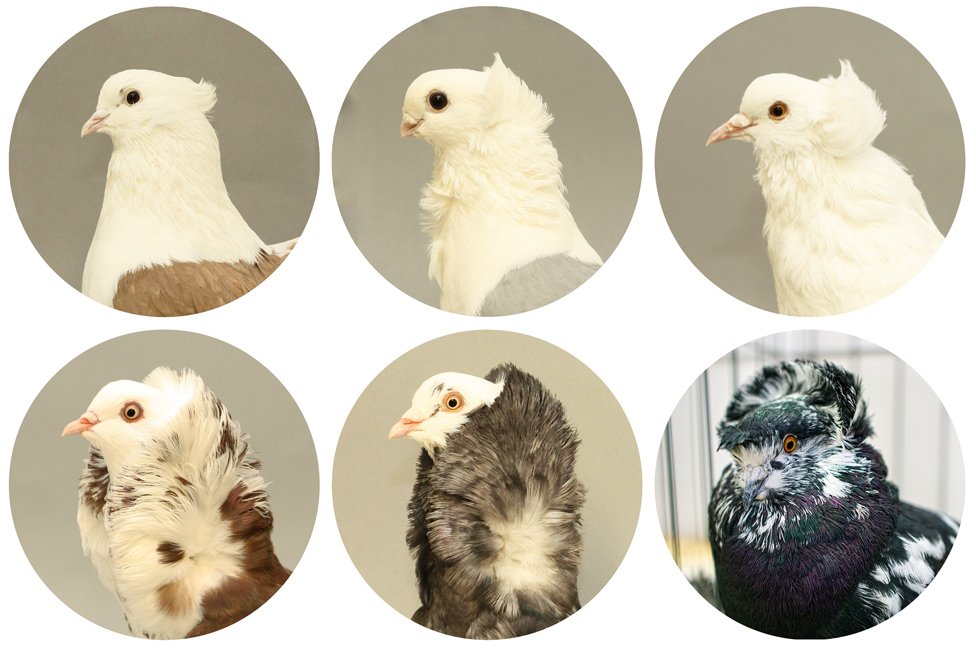Inherited characteristics are the products of proteins, and proteins are coded for by genes. Ultimately, the differences in our (and pigeons’) inherited characteristics arise from differences in the DNA sequences of our genes. DNA differences can affect how a protein functions, or when and where a protein is made.
In 2013, a group of researchers at the University of Utah, led by professor Mike Shapiro, identified the genetic variation that causes the crest phentoype.
To find the crest gene, the research team looked at the genomes of 42 pigeons (representing 37 breeds, plus 2 feral birds and a closely related species) some with crests and some without. They compared the DNA sequences, and they found a region of DNA that was different between crested and non-crested birds. The region contained one gene, called EphB2 (short for Ephrin receptor B2).
When the researchers looked at another 130 birds, they saw a 100% correlation: all birds with crests had two copies of the ‘crest’ version of EphB2, and all birds without crests had at at least one copy, and more often two, of the ‘no crest’ version of EphB2.
Groups of 3 nucleotides along a stretch of DNA code for specific amino acids in a protein. The protein-coding portions of the ‘crest’ and ‘no crest’ alleles differ by just one nucleotide, and they code for proteins that differ by just one amino acid. A small portion of the DNA and amino acid sequeces are shown on the right.





